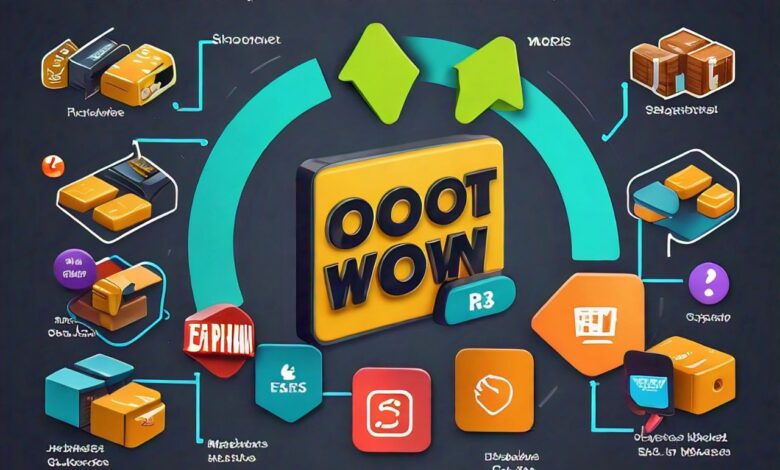Migrating from Shopify to WooCommerce: A Step-by-Step Guide for Your Online Store

If you’re looking for more control and flexibility over your eCommerce store, migrating from Shopify to WooCommerce may be the right move. Shopify is a convenient, hosted platform that simplifies the store setup process, but it comes with some limitations in terms of customization and costs. WooCommerce, as an open-source plugin built for WordPress, offers greater control, customization capabilities, and fewer ongoing fees. In this guide, we’ll explain how to migrate from Shopify to WooCommerce and ensure a smooth transition for your online business.
Reasons to Migrate from Shopify to WooCommerce
Before diving into the process, let’s explore why many businesses choose to migrate from Shopify to WooCommerce:
- Cost Efficiency: WooCommerce is a free, open-source platform, which means you won’t face recurring monthly fees as you do with Shopify. You’ll still need to pay for hosting and some optional plugins, but overall it can be more cost-effective.
- Customization Freedom: With WooCommerce, you have unlimited control over the design and functionality of your store. You can modify the code, add custom plugins, and create a store that suits your exact needs.
- Ownership of Data: WooCommerce is self-hosted, meaning you own and control your store’s data, unlike Shopify, which hosts your store and retains some control over the data.
- Advanced SEO Options: Since WooCommerce is built on WordPress, it offers excellent SEO features that give you more control over how your content is optimized for search engines.
Preparing to Migrate from Shopify to WooCommerce
To ensure a smooth migration, it’s important to prepare properly. Here are the steps to follow before beginning the migration:
- Backup Your Shopify Store: While Shopify is hosted, it’s still wise to back up your data. Export your products, customer details, and orders to CSV files for safekeeping.
- Select a Hosting Provider: WooCommerce requires a hosting service, so choose a provider that supports WooCommerce, such as SiteGround, Bluehost, or WP Engine.
- Set Up WordPress: Once you’ve chosen a hosting provider, install WordPress, which most hosting services allow you to do with a single click.
- Install WooCommerce: After installing WordPress, head to the plugin section of your dashboard and add WooCommerce. Follow the setup guide to configure the basic settings for your store.
Steps to Migrate Your Data
To move your products, customer information, and orders from Shopify to WooCommerce, you’ll need the right tools. Several plugins and services can help with this process:
- Cart2Cart: This is a paid service that automates the migration of all your data, such as products, customers, and orders, from Shopify to WooCommerce.
- FG Shopify to WooCommerce: A free plugin that facilitates Shopify data import into WooCommerce, though some manual adjustments may be required afterward.
1. Transfer Products, Customers, and Orders
Using your chosen migration tool, transfer the key data such as:
- Products: Ensure that all product details, including images, descriptions, and pricing, are successfully transferred to WooCommerce.
- Customers: Customer data is vital, so double-check that email addresses, accounts, and order histories have migrated correctly.
- Orders: Import all past orders to retain your complete order history in WooCommerce.
2. Customize Your WooCommerce Design
Your Shopify store’s design won’t transfer automatically. You’ll need to choose a WooCommerce theme that best fits your brand, and you may need to tweak it further. WooCommerce offers a variety of themes and customizations, and you can use tools like Elementor to further enhance your store’s look.
Final Checklist for Post-Migration
Once your data has been transferred, it’s essential to review and finalize everything before launching your new store. Here are the key points to check:
- Product Review: Ensure that all product information, categories, and images have transferred correctly.
- Test Orders: Run several test transactions to verify that your checkout process and payment gateways are working as expected.
- URL Redirects: To maintain SEO performance, set up 301 redirects from your old Shopify URLs to your new WooCommerce URLs.
- Payment and Shipping Options: Ensure that the payment gateways and shipping settings are properly configured in WooCommerce.
If the migration seems overwhelming, you may want to consider using ecommerce migration services that specialize in handling data transfer and technical setups for WooCommerce stores.
Conclusion
Migrating from Shopify to WooCommerce provides greater control and customization options, as well as potential cost savings. Following these steps can help ensure a smooth transition. Be sure to back up your data, use the right migration tools, and thoroughly test your new store before launching it live. By choosing WooCommerce, you’re gaining the flexibility and control needed to expand and grow your online business without limitations.

